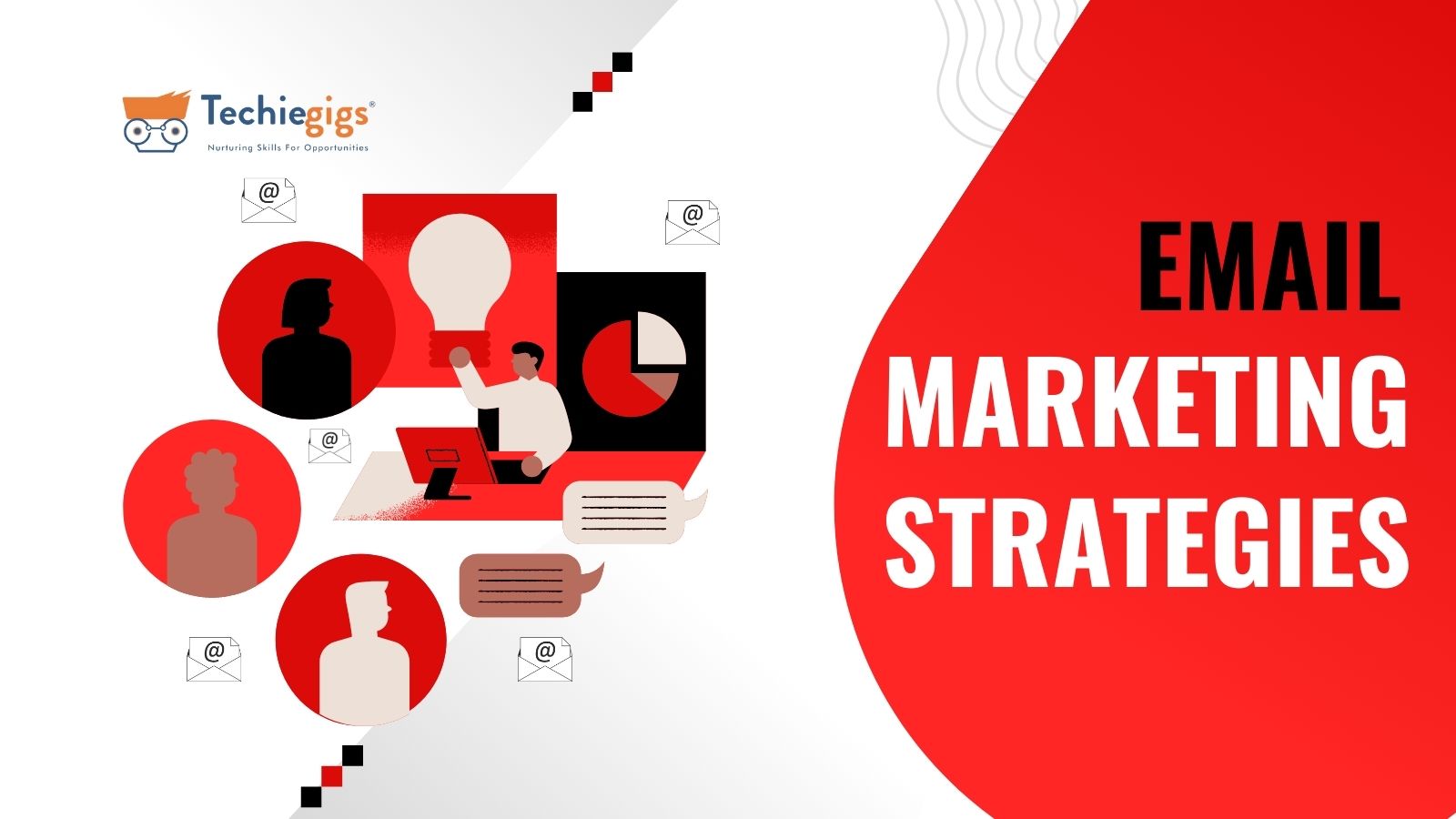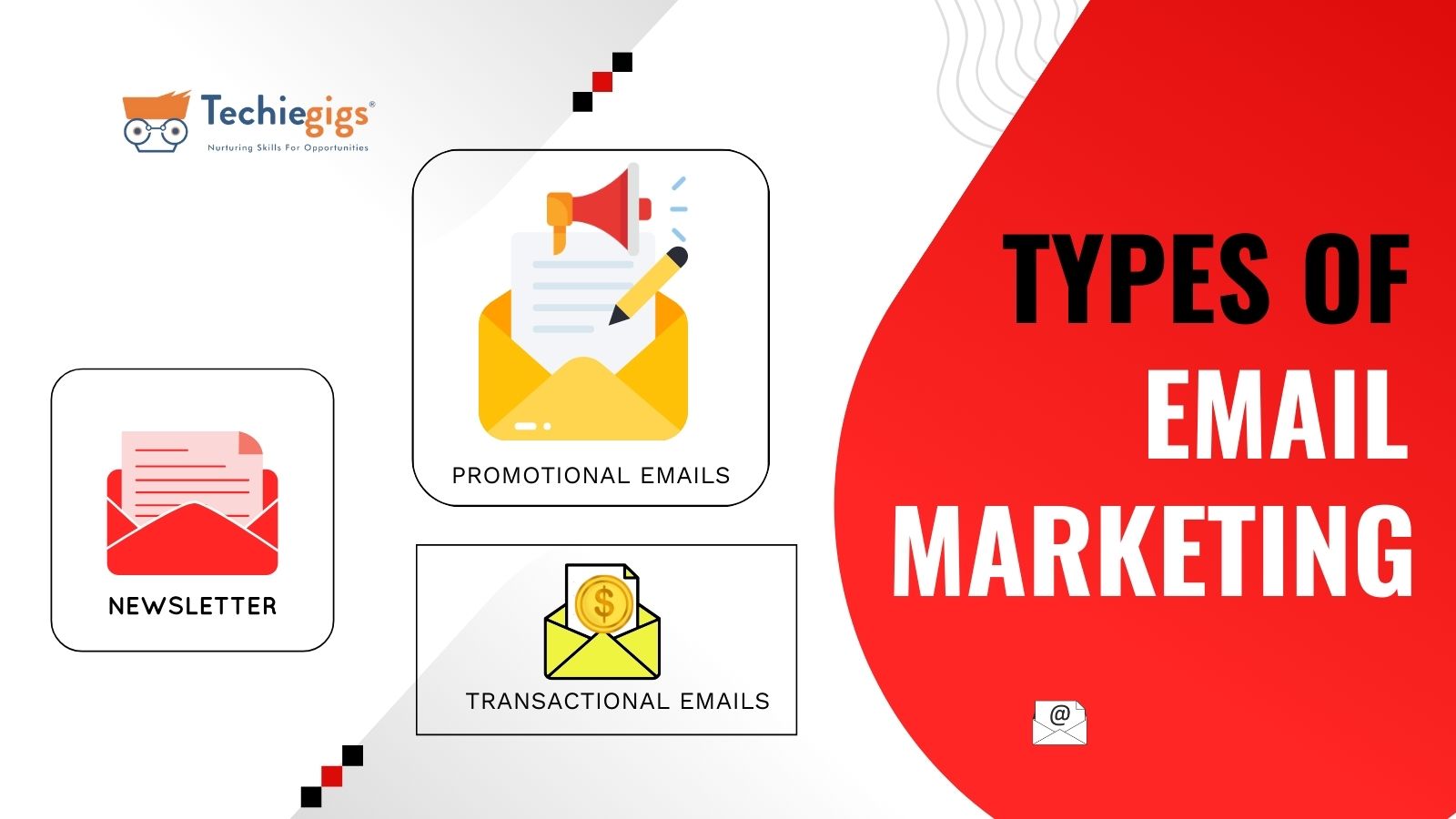Email marketing in digital marketing continues to thrive as a critical component of a comprehensive digital strategy, offering unmatched direct engagement with audiences. This blog post will focus on defining email marketing, exploring effective strategies, the different types available, steps to get started, and the pros and cons of using this powerful tool.
Table of Content:
- What is Email Marketing?
- Understanding Email Marketing Strategies
- Exploring Types of Email Marketing
- How to Get Started with Email Marketing
- Advantages and Disadvantages of Email Marketing
What is Email Marketing?
Email marketing in digital marketing is the practice of sending targeted messages directly to a list of subscribers via email. These messages, ranging from promotional content to customer engagement letters, serve as a direct line of communication that can personalize the consumer experience and enhance brand loyalty. The strength of email marketing in digital marketing lies in its ability to deliver personalized and timely messages to a segmented audience, making it an indispensable tool in digital marketing.

Email marketing in digital marketing differs from other forms of communication due to its permission-based nature. Subscribers voluntarily provide their email addresses, allowing marketers to send content tailored to their interests and needs. This form of marketing is used across industries for product announcements, newsletters, re-engagement campaigns, and transactional communications.
Understanding Email Marketing Strategies
A well-planned email marketing strategy forms the backbone of successful digital marketing campaigns. It involves defining goals, understanding the audience, crafting engaging content, and continuously optimizing performance based on analytics. Here are some essential components of a successful email marketing strategy:

- Audience Segmentation: Dividing your email list into smaller, targeted groups based on demographics, behaviors, and preferences. Segmentation ensures that the content sent is relevant and engaging, which leads to better open and click-through rates.
- Personalized Content: Crafting content that resonates with individual subscribers to increase engagement. Personalization can include using the recipient’s name, recommending products based on past purchases, or tailoring content to their interests.
- Automation: Utilizing tools to send emails automatically based on user actions or predefined triggers. For instance, welcome emails can be sent immediately after a user subscribes, and abandoned cart emails can remind customers to complete their purchases.
- Clear Call-to-Action (CTA): Ensuring every email has a clear objective, prompting recipients to take the desired action. Effective CTAs use actionable language, such as “Shop Now,” “Learn More,” or “Download the Guide.”
- Content Strategy: Developing a content calendar that outlines what type of content will be sent and when. A strategic content plan helps maintain consistency and relevance.
- Performance Analysis: Regularly reviewing open rates, click-through rates, and conversions to refine future strategies. Metrics like bounce rates and unsubscribe rates also provide insights into audience engagement and content effectiveness.
- Integration with Other Channels: Combining email marketing efforts with other digital marketing channels, such as social media, content marketing, and paid advertising, creates a cohesive customer journey.
Exploring Types of Email Marketing
Email marketing in digital marketing encompasses various types of emails, each designed to achieve specific objectives. Understanding these types helps businesses deliver the right message to the right audience at the right time.

- Newsletters: Regularly scheduled emails that share company news, updates, or educational content with subscribers. These emails are an effective way to maintain regular contact and keep your audience engaged with your brand.
- Promotional Emails: Emails designed to promote special offers, new products, or limited-time deals to drive sales. These emails often include discount codes, special promotions, or product launches to encourage immediate action.
- Transactional Emails: Triggered by customer actions, such as order confirmations, shipping notifications, and password resets. These emails provide critical information and help build trust with your audience.
- Re-engagement Emails: Sent to inactive subscribers to rekindle their interest in the brand. These emails often contain personalized messages, special offers, or surveys to understand why engagement has dropped.
- Welcome Emails: Introduce new subscribers to the brand and set the tone for future communications. A well-crafted welcome email can leave a lasting impression and boost long-term engagement.
Each type serves a distinct purpose, and a balanced mix ensures a well-rounded email marketing strategy. By using a combination of these email types, businesses can cater to different stages of the customer journey and maintain a dynamic communication flow.
How to Get Started with Email Marketing
Launching a campaign of email marketing in digital marketing requires a strategic approach. Follow these steps to get started:
1. Choose the Right Platform: Select an email marketing service provider that offers automation, segmentation, analytics, and customizable templates. Popular platforms include Mailchimp, HubSpot, and Constant Contact.
2. Build Your Email List: Use sign-up forms, lead magnets, and social media promotions to grow a list of engaged subscribers. Offer incentives like discounts, free resources, or exclusive content to encourage sign-ups.
3. Segment Your Audience: Divide your list into relevant segments to tailor content based on subscriber characteristics and behaviors. Segmentation can be based on demographics, purchase history, engagement levels, and more.
4. Craft Compelling Content: Focus on delivering value through informative, engaging, and visually appealing emails. Use a mix of text, images, and interactive elements to keep your emails engaging.
5. Test and Optimize: Use A/B testing to experiment with different subject lines, content, and CTAs, then analyze results to optimize future campaigns. Regular testing helps identify what resonates best with your audience.
6. Ensure Compliance: Adhere to email marketing regulations, such as GDPR and CAN-SPAM, by obtaining consent and providing easy opt-out options. Transparency and ethical practices build trust and protect your brand’s reputation.
7. Monitor Performance Metrics: Track open rates, click-through rates, conversion rates, and unsubscribe rates to gauge the effectiveness of your campaigns. Use these insights to refine your content, timing, and segmentation strategies.
Advantages and Disadvantages of Email Marketing
Advantages of Email Marketing
- Cost-Effective: Affordable compared to traditional marketing methods. Email marketing requires minimal investment, making it accessible to businesses of all sizes.
- High ROI: Generates significant returns when implemented correctly. Studies show email marketing can deliver an ROI of $42 for every dollar spent.
- Personalization: Content can be tailored to individual recipients. Personalized subject lines and content improve open and click-through rates.
- Measurable Results: Performance is easily tracked with analytics tools. Marketers can analyze open rates, click-through rates, and conversions to refine strategies.
- Scalability : Campaigns can be scaled up or down based on business needs. Email marketing platforms allow businesses to reach thousands of subscribers simultaneously.
Disadvantages of Email Marketing
- Over Saturation: High competition in inboxes can reduce engagement. As more businesses adopt email marketing, standing out becomes increasingly difficult.
- Spam Filters: Emails may be flagged as spam, reducing deliverability. Poorly crafted emails or unfamiliar sender addresses can trigger these filters.
- Design Issues: Emails must be optimized for different devices. Inconsistent formatting across devices can negatively impact readability.
- Content fatigue: Repetitive content can lead to disengagement. Subscribers may lose interest if emails lack variety or creativity.
- Compliance Requirements: Must adhere to legal standards like GDPR. Failure to comply can lead to penalties and loss of trust.
Conclusion
Email marketing in digital marketing remains a powerful, cost-effective way to connect with audiences, nurture relationships, and drive conversions. By understanding its types, implementing strategic practices, and acknowledging its advantages and challenges, businesses can harness the full potential of this marketing channel. Start today by defining your goals, segmenting your audience, and crafting messages that resonate, and watch your email marketing efforts flourish in the digital landscape.
